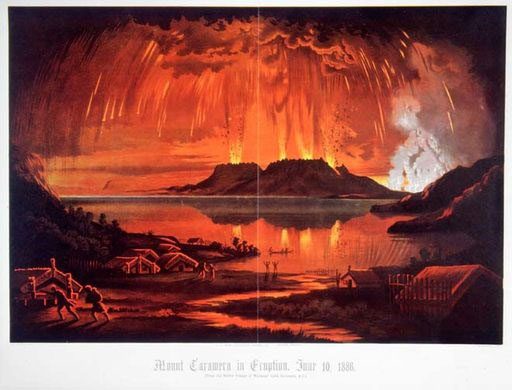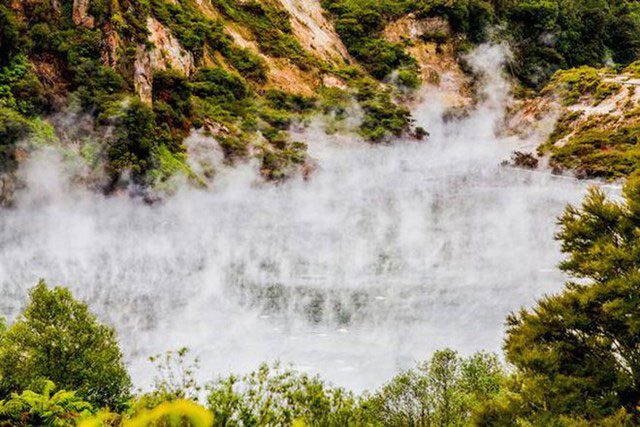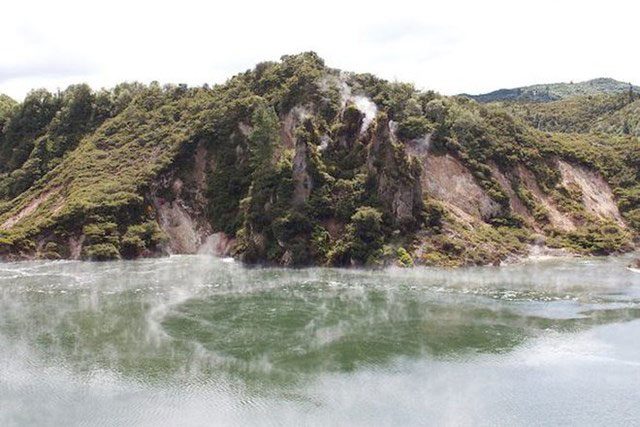In June 1886, a series of earthquakes shook the Rotorua region in New Zealand. The Tarawera volcano subsequently “stirred” and erupted violently. This is considered the largest volcanic eruption in New Zealand’s history.
The relentless earthquakes and volcanic activity caused widespread disaster. Villages were destroyed, over 100 people lost their lives, and the famous pink and white terraces of the island vanished beneath the waters of Lake Rotomahana.

Painting of the volcanic eruption that year.
Following this was the formation of the valley known as the Waimangu Volcanic Rift. Within it lies a hot water lake that, just by its name, suggests… heat. It is called the Frying Pan.
However, the Frying Pan of that time was not the Frying Pan we know today. In 1917, another massive volcanic eruption occurred, reshaping the terrain around the lake and giving it its current size and shape.
The Largest Hot Water Lake in the World
The Frying Pan is regarded as one of the largest hot water lakes in the world as of now.
This hot water lake gets its name because the water temperature here consistently ranges from 50 to 60 degrees Celsius.




The water temperature here consistently ranges from 50 to 60 degrees Celsius.
The Frying Pan covers an area of 38,000 m2. The shallow areas have an average temperature of 110-130 degrees Fahrenheit (43 to 54 degrees Celsius). Most of the lake’s bottom is only about 5.4 meters deep. However, at the vents, depths can reach up to 18 meters.
Some sources claim that Frying Pan is the largest hot water lake in the world, while others argue that the Boiling Lake in Dominica or the Grand Prismatic Spring in Yellowstone National Park might be more deserving of the title “champion.”
Why Does It Steam Year-Round?
At first glance, many people might think the white smoke hovering over the lake is fog, formed by the cold air mixing with the hot water. However, this dense cloud is actually steam rising from the lake, containing carbon dioxide and hydrogen sulfide.
The Frying Pan is home to a variety of organisms, most of which thrive in high temperatures. These organisms have adapted to survive and flourish in such extreme conditions.
The water in Frying Pan reaches temperatures of 50 to 60 degrees Celsius, a level that the human body cannot withstand, but that does not mean it is impossible to conquer.
In the 1970s, Ron Keam, a researcher from the University of Auckland (New Zealand), conducted a comprehensive survey of Frying Pan Lake. He used a specially designed wooden boat capable of withstanding high temperatures and chemicals found in the lake. This boat was called Maji Moto.
With a combination of luck and scientific expertise, Ron successfully navigated Frying Pan without being overwhelmed and “cooked.”


















































